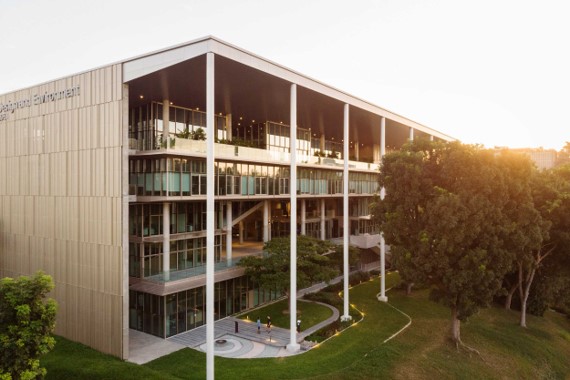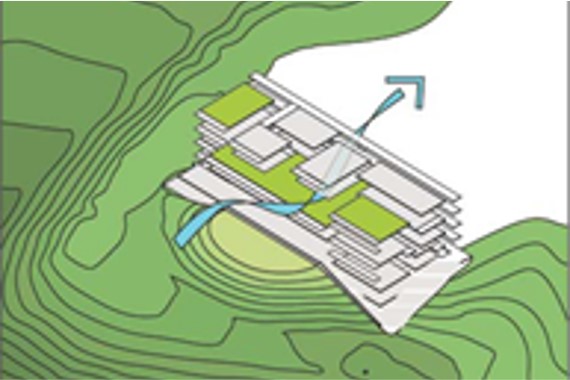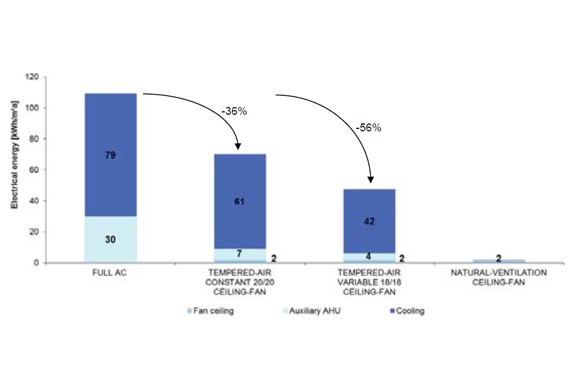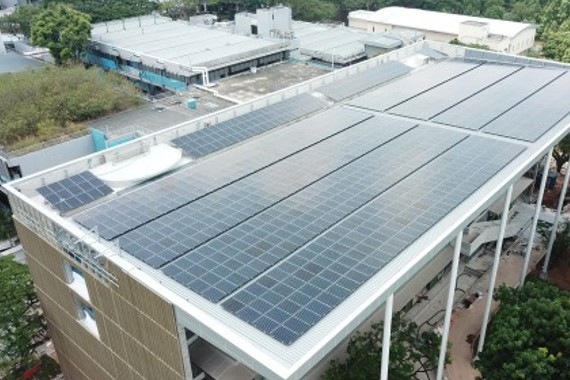NUS School of Design & Environment 4 (NUS SDE4)
Singapore
Site Layout & Planning
The challenging terrain around the existing building and abundant mature trees on the site are assimilated with the new building to bring the surrounding landscape in close proximity with interior spaces.
Climate Responsive Design
The design incorporates the principles of vernacular Southeast Asian tropical architecture.
The building mass is punctuated by an alternation of shaded terraces, landscaped balconies, and informal spaces that act as thermal buffers and social spheres that imitate the signature tropical verandas.
The building has an extended roof projection that forms a tropical portico.
Form & Massing
The massing is broken down by using the architectural concept of ‘floating boxes’, where its shallow plan and porous layout allow for cross-breezes. The optimal North-South openings let in natural light and provide views to the outdoors.
Façade & Envelope
The south façade is designed with lined columns scaling the entire height of the structure, supporting the large over-sailing roof that protrudes by 52 feet. This shades the building from the tropical sun and allows for additional area on the roof for PV panels.
The east and the west facades are covered in undulating perforated corrugated aluminium panels that moderate the amount of light filtering through, thus acting as shading devices.
The glass used for facades is high-performance double-glazed unit (DGU) along with large overhangs and high louvres.
Ventilation Design
Only 17% of the building is fully air-conditioned, whereas 46% of the building is naturally ventilated and 26% of the building is hybrid tempered.
Hybrid tempered ventilation is a combination of air-conditioning and natural ventilation, wherein the weather permitting rooms are provided with openable glazing to encourage natural ventilation.
Daylight Design
The building design is optimised to facilitate optimum daylight with the help of open platforms, minimal solid walls and large window / glazed façade designed with overhangs, internal blinds, and light shelves.
Almost 100% of occupants are within 7.5 metres of the windows, with access to glare-free daylight and view to the outdoor greenery.
Biophilic design
Ambiguous boundaries between the indoors and outdoors, allows uninterrupted connection of occupants with the natural systems.
The building material palette highlights the raw and natural characteristics with the use of steel, perforated metal and concrete.





